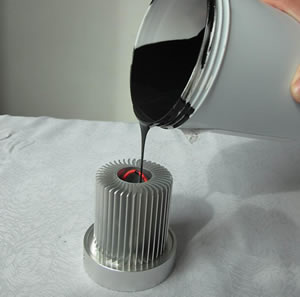- Two-component adhesive
- Auto motive epoxy adhesive
- Epoxy adhesive for stone
- Structural adhesive
- Methacrylate adhesive
- Auto spare parts / Hardware
- Sealant adhesive
- Gasket maker
- Silicone sealant
- Fixing foam
- Light industrial / DIY glue
- Contact cement / neoprene glue
- Wood glue / white glue
- SBS adhesive / spray glue
- PVC glue
- Daily use glue adhesive
- Super glue / cyanoacrylate adhesive
- Adhesive tape
- Fly / mouse killing glue

Home > Notre information
Usually when we buy glue we always rely on our naked eyes to see the effect, in fact, want to understand the adhesive strength needs to use some special methods, here I will introduce three methods, I hope to help you. Sound Resistance Testing: The change of mechanical resistance of bonded joint is measured by the anti-sound resistance tester. If the bonding is defective, the measured impedance will drop dramatically. Ultrasound flaw detection: 106 orders of magnitude ultrasonic testing of bonded joints, if the bonded joints have defects such as voids and bubbles, ultrasonic transit will be reflected back by these defects. Liquid crystal flaw detection method: when used, liquid crystal (cholesterol type substance) and its filler are coated on the surface of the bonded joint, and then heated uniformly and rapidly. When the bonded joint is defective, the temperature rises quickly, reflecting the color on the liquid crystal is different. Adhesion process is the operation step of using adhesive to connect the bonded object into a whole. The process is first to repair the surface to be bonded to make it fit well. Secondly, according to the requirements of material and strength, the bonded surface is treated differently. The bonding process between the adhesive and the surface of the bonded material is a complex physical and chemical process. The intermolecular forces produce the interfacial attraction and bonding force to achieve a certain bonding strength. Therefore, the bonding strength depends not only on the composition and formula of the adhesive, surface structure and morphology, but also on the bonding process. For example, the surface treatment of the adhesive, coating method, thickness of the adhesive layer, curing conditions, drying time and temperature, the surface treatment of the adhesive materials and the surface is a variety of. Like, there are metal, non-metallic, polar, non-polar, there are smooth or dense surface, there are rough or porous surface, there are clean, hard surface, there are stained, loose surface, etc. Adhesive surfaces are often corroded, grease, dust, etc. These adhesives hinder the surface of the adhesive to the surface of the infiltration, reducing the adhesive and the contact between the material, seriously affecting the bonding performance. In order to obtain high bonding strength, durability of the new automotive adhesives Kesai adhesive products, it is necessary to bond the surface of a variety of adhesives. Proper treatment is carried out. The purpose of surface treatment is to change the unfavorable bonding state of the surface and to obtain a clean, dry, rough and active surface, so as to ensure that the adhesives and the adhesives are fully wetted and tightly bonded to achieve solid bonding. There are several common surface treatment methods. Surface treatment of metal materials is affected by ambient atmosphere. Contaminants, gas layers (nitrogen, oxygen, carbon dioxide, etc.), oxide layers, work hardening layers, etc. are adsorbed on the surface of metal materials. Surface treatment of metal materials mainly includes oil removal, rust removal and activation.





